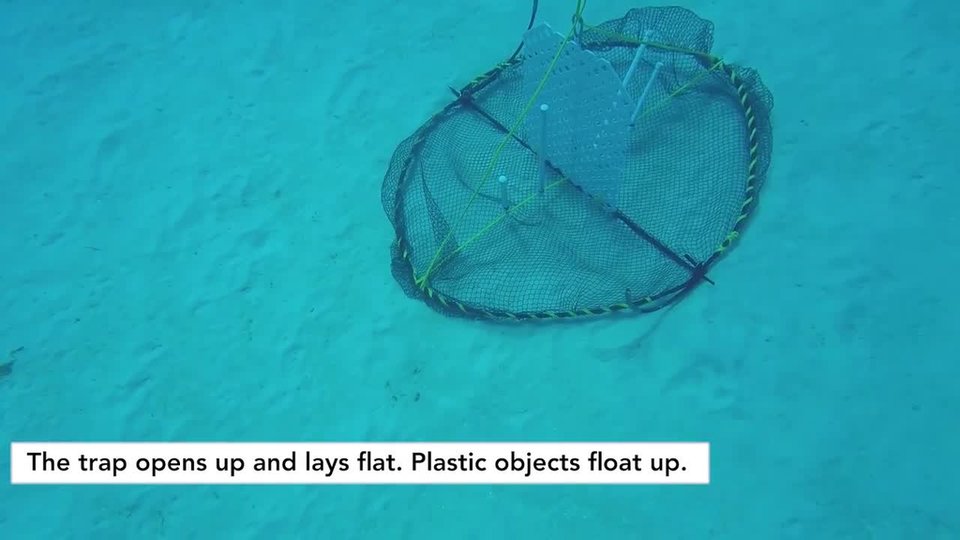Searchingfor Solutions
So,whatdowedotostopthislionfishinvasion?Peopleareworkingonwaystoaddressthecrisis—scientists,divers,evenchefs.Yes,chefs.Butwe’llgettothatina minute.
Let'sstartwiththescientists.Lionfishdon’thaveanynaturalpredatorsintheAtlanticOcean.So,somescientiststriedtosolvetheproblembyteachinglocalpredatorstolookatlionfishas lunch.
Adiverwouldspearalionfishandthenofferupthemealtoanearbybarracuda,eel,orshark.Itseemedlikeagoodidea,butithadafewdrawbacks.Whilethepredatorswouldgladlyeatthelionfishtheywereoffered,mostofthemdidn’tstarthuntinglionfishontheirown.Theyexpectedhandouts.Andsomespecies—especiallysharks—begantogetaggressivewith divers.

A diverspearsmanylionfishduringalionfish "derby."
FishingTournaments
Divershavehadabitmoreluckmanagingtheproblem,downtocertaindepths,throughlionfish “derbies.”
Alionfishderbyisacompetitiontocollectandremoveasmanylionfishatagivenplaceaspossible.TeamsofdiversSCUBAdive,freedive,orsnorkel.Theynetlionfishorspear them.
Eachlionfishismeasured,andprizesaregivenoutforteamsthatcatchthemost,thebiggest,andthesmallestlionfish.Thepublicisinvitedtoattendthecompetition.Theycantastefreelionfishsamplesandlearnmoreabout lionfish.
From2009to2018,theReefEnvironmentEducationFoundation(REEF)hostedderbiesthatremovedmorethan23,000 lionfishfromspecific sites.

Chefspreparenewlionfish recipes.
AFishyFare
Despitetheirtroublesomespines,lionfisharenotpoisonous.Theyarevenomous.Thedifferencebetweenpoisonandvenomisthemethodofdelivery.Poisonhastobeeatenorabsorbedtobeharmful.Venommustbeinjectedintothebloodstreamtocauseinjury,suchasthroughasharpspineorfang.Yet,itisharmlessif consumed.
Giventhat,somechefshaveadoptedastrategyof“ifwecan’tbeatthem,eatthem.”In2010,REEFreleasedacookbooktogetcommercialdiversandchefsinterestedinlionfish.Chefsatmanytoprestaurantshavetriedtofindcreativewaystoofferthisnewcuisinetotheircustomers.However,buildinganindustryaroundthesefishishard.Theydon’tbiteonhooks.Andtheycan’tbecaughtusinglarge nets.
SettingaTrap
SteveGittings,achiefscientistattheNationalOceanicandAtmosphericAdministration'sNationalMarineSanctuarySystem,mayhaveyetanotherstrategytodealwithlionfish.Heisfocusedontrappingthembyusingtheirnaturaltendenciesagainst them.
Lionfishliketogatheringroupsaroundunderwaterstructures.So,Gittingsdevelopedatrapthatworkslikeachangepurse.Nettingisattachedtotworoundedsidesofthe“purse.”Whenthetraphitsanoceansurface,itspringsopenandlays flat.
Insidethetrap,afewplasticobjectsfloatup.Theseobjectsattractlionfish.Thetrapstaysopenforawhile.Otherfishcomeandgo.Butlionfishtendtohangoutatthetrap.Finally,afishermantugsonthetrap.Thepursequicklycloses,shuttinganylionfish inside.


